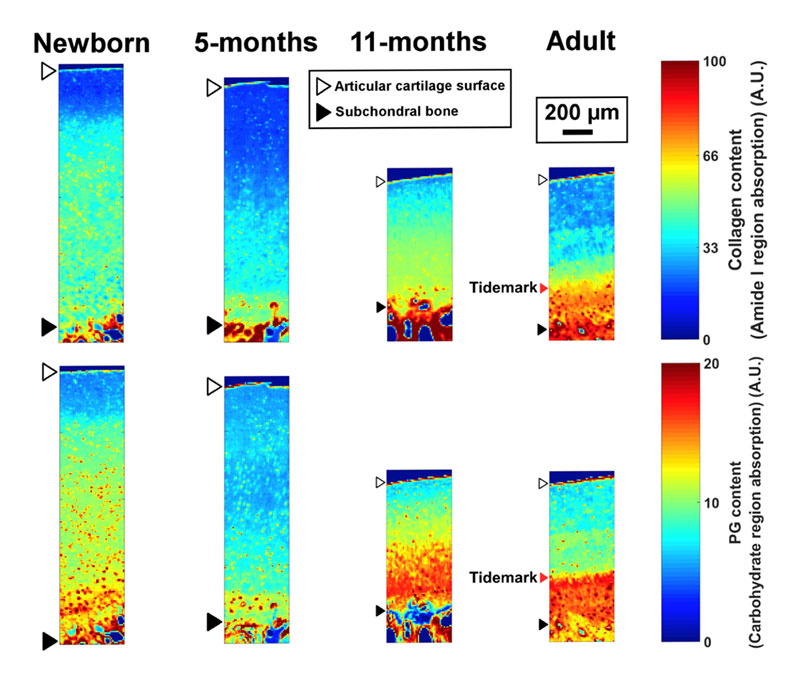It is known that articular cartilage tissue undergoes several structural, biochemical and biomechanical changes during maturation. In a study by partner UOULU (Oinas et al., 2018), equine articular cartilage samples of four different maturation levels (newborn, 5-month-old, 11-month-old and adult) were investigated ex vivo.
Samples were subjected to biomechanical tensile testing, Fourier transform infrared microspectroscopy (FTIR-MS) and polarized light microscopy (PLM). FTIR-MS and PLM were used to evaluate collagen and proteoglycan contents, and collagen orientation, respectively.
Authors observed that both the collagen and proteoglycan contents increased with age, and collagen orientation developed into an arcade-like orientation. Importantly, all the compositional (collagen and proteoglycan contents) and structural (collagen orientation) parameters were important predictors of the biomechanical tensile properties.

These results highlight the potential of mid-infrared spectroscopy to predict the biomechanical properties directly from mid-infrared (MIR) spectral data in different maturation phases. This opens up promising diagnostic opportunities when developing MIR arthroscopy probe in the MIRACLE project.


